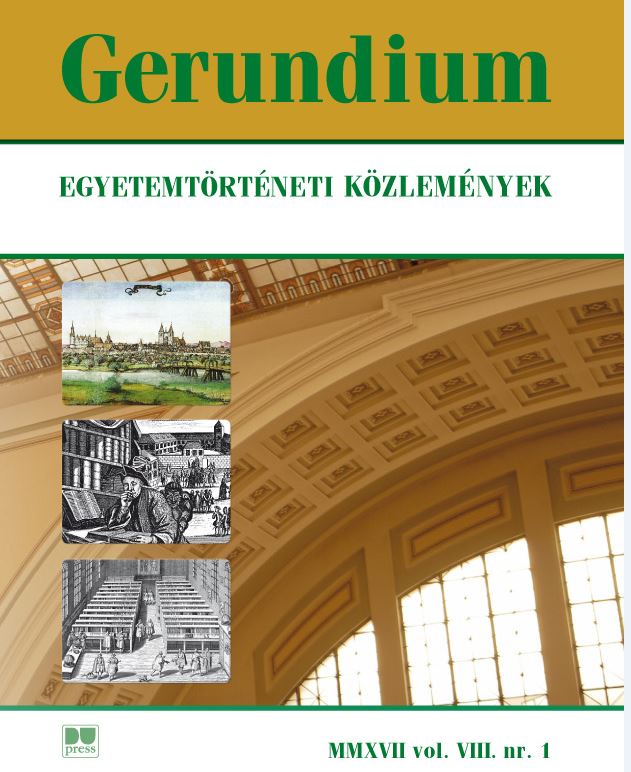Krakkótól Wittenbergig Magyarországi hallgatók a krakkói, bécsi és wittenbergi egyetemeken a 16. században
Szerző
Megtekintés
Hogyan hivatkozzuk
Absztrakt
From Krakow to Wittenberg. Students from the Hungarian Kingdom at the Universities of Krakow, Vienna and Wittenberg in the 16th Century. This paper aims at collecting the students from the Hungarian Kingdom at the universities of Krakow, Vienna and Wittenberg in the 16th century. According to the medieval traditions, the majority of the students attended the university of Vienna and Krakow (90%) in the first quarter of the 16th century. After the battle of Mohács (1526), the situation changed
basically, and in the second period up to 1550, the University of Wittenberg started to rise, however, the total number of the peregrinating students decreased significantly. After 1550 the peregrination from the Hungarian Kingdom started to increase, however, its magnitude reached the level of the beginning of the 16th century again only in the 17th century. The heyday of the University of Wittenberg dates back to the second part of the 16th century, when the university of Krakow was hardly attended by any students of the Hungarian Kingdom. Whereas the universities of Vienna and Krakow attracted the students originated from the institutions’ neighbourhood, the university of Wittenberg was attended by the Saxons and it was also popular with the burghers of Debrecen. All the three universities had an organization for the students who came from the Hungarian Kingdom. However, the one of Vienna (Natio Hungarica) was not a national college in its modern sense; the one of Krakow (Bursa Hungarorum) was considereda national community in the first half of the 20th century. On the other hand, it seems more acceptable, that those students were its members, who originated far from Krakow. The college of Wittenberg (Coetus Ungaricus) was considered a national community, but its students must have chosen it because of their religious convictions, since many of them were engaged in the new ideas of the Reformation. Meanwhile, the most-known reformers from the 16th century attended these three universities, mainly Wittenberg. Both the first Hungarian Calvinist bishop, Márton Sánta Kálmáncsehi (Krakow 1523) and ‘the Hungarian Luther’, Mátyás Bíró Dévai (Krakow 1523, Wittenberg, 1528), moreover Ferenc Dávid (Wittenberg 1545), the founder and the first bishop of the Unitarian Church of Transylvania appeared at these universities.







